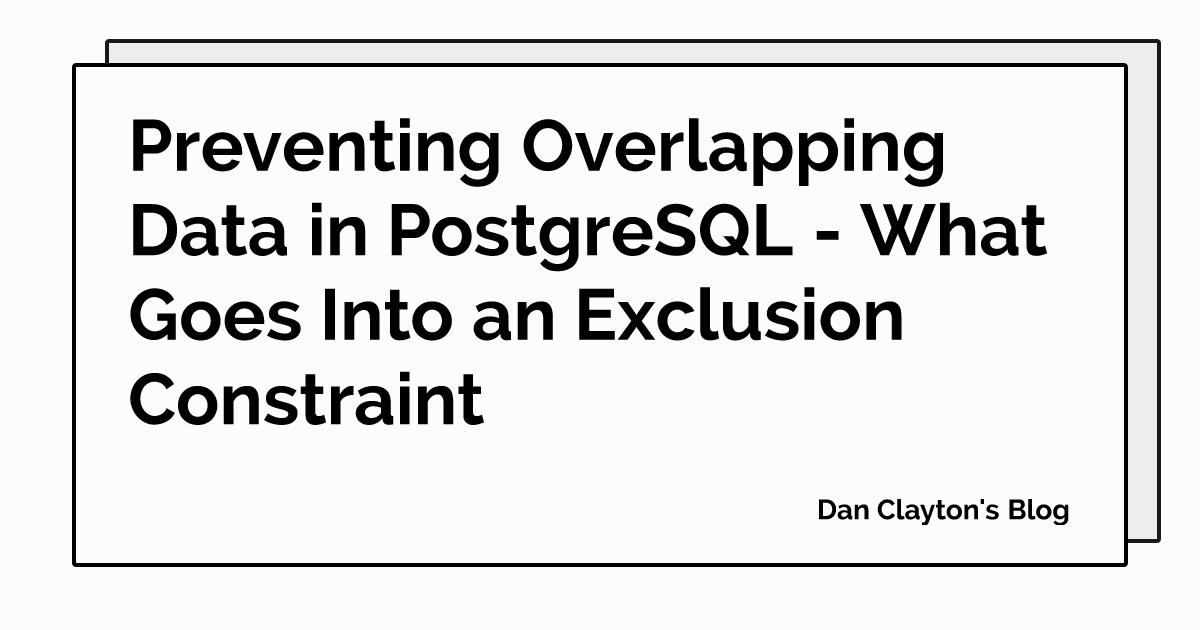Understanding Exclusion Constraints in PostgreSQL
Preventing Overlapping Data in PostgreSQL - What Goes Into an Exclusion Constraint 🔗

Exclusion constraints in PostgreSQL are effective tools for preventing overlapping data entries in a database, particularly useful in scenarios like hotel room bookings or managing date ranges for resources. By enforcing these constraints at the database level, developers can reduce the amount of application logic and testing required, leading to fewer bugs. The text provides examples of how to create tables and apply exclusion constraints using the GiST index, specifically demonstrating the use of timestamp ranges to manage reservations. Additionally, it discusses the flexibility of exclusion constraints compared to unique constraints, highlighting the importance of defining how rows are compared.
What are exclusion constraints in PostgreSQL?
Exclusion constraints are rules that prevent certain combinations of values in different rows of a table, ensuring that specific conditions cannot coexist, such as overlapping dates for room reservations.
How do exclusion constraints help in database integrity?
By enforcing constraints at the database level, developers can trust that the data is accurate without relying heavily on application code or extensive testing, reducing the likelihood of bugs.
When should I use GiST versus b-tree indexes?
Use GiST indexes for complex data types like ranges or geometric shapes, while b-tree indexes are suitable for scalar data types. If you need both types in one index, you can use the btree_gist extension.